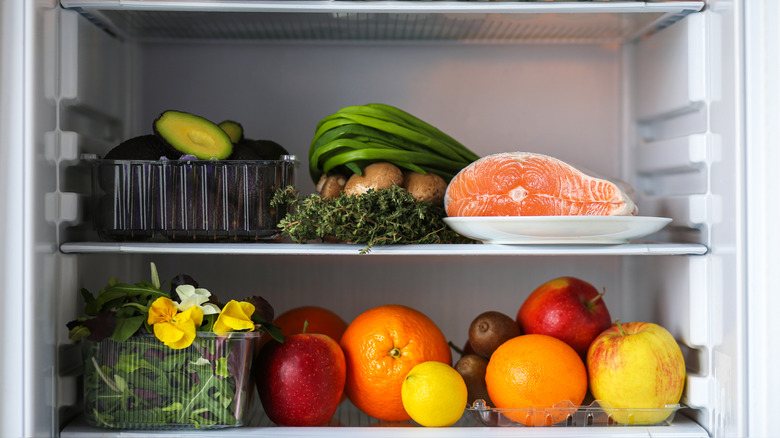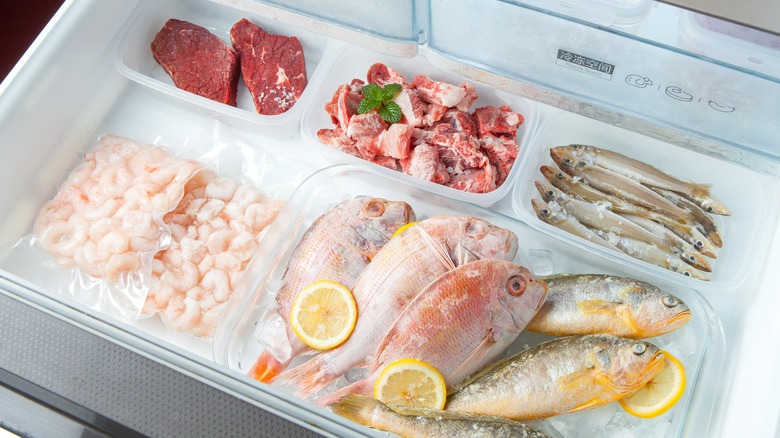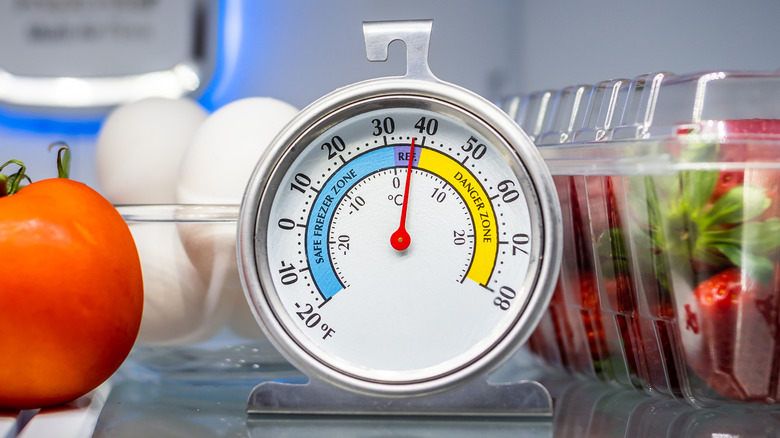How Long Food Really Lasts In A Fridge Without Power
Power outages are something most people dread. However, sometimes there's just no stopping them. In fact, they are on a rise. According to Climate Central, power outages jumped 64% in the last decade. While power outages can be scary, it's important to know what to do in such events as they can last from a couple of hours to several days.
The refrigerator and the food inside may be an afterthought to most on a typical day. It probably won't occur to you that your food may be at risk until the power goes out. Bacteria can contaminate food if not stored properly, particularly at the right temperature. According to the U.S. Department of Agriculture, bacteria can grow between temperatures of 40 and 140 degrees Fahrenheit, and is otherwise known as the "danger zone." Eating food within this danger zone can lead to food poisoning or infections like salmonella (via Healthline). In the case of a power outage, knowing whether your food is safe to consume not only saves you money but may potentially help save you a trip to the hospital.
How long can food last during a power outrage?
Food is safe to eat for up to four hours in a fridge without power, according to the CDC. Once those four hours pass, the CDC advises throwing out all perishable food, such as meat, fish, cut fruits and vegetables, eggs, and milk. The freezer is able to store food much longer without power, for up to 48 hours. However, if your freezer is only half-full, then perishable food only lasts up to 24 hours. The CDC notes that to reduce spoilage, the fridge's door should remain closed during the duration of the power outage.
Temperature plays a large role in determining if your food is safe to eat. If food is exposed to a temperature above 40 degrees Fahrenheit, for more than two hours, it's best to throw it out. There are some instances, in which food above 40 degrees can stay put. Usually, whole fruits and vegetables and hard cheeses are still safe to eat after two hours (via FoodSafety.gov). While most dairy products need to be discarded, butter is still safe. Bread products, such as tortillas, cakes, and rolls are safe to keep as well. Above all, CDC recommends that "when in doubt, throw it out."
Other ways to keep food cold
If the power doesn't turn back on after four hours, don't fret — there are alternative ways to keep your food cold. The Food and Drug Administration advises buying and placing dry ice or block ice in the refrigerator, adding that "fifty pounds of dry ice should keep an 18 cubic foot, fully stocked freezer cold for two days."
Have a cooler laying around? The USDA suggests transferring perishable food to a cooler packed with gel packs or ice if your refrigerator reaches above 40 degrees Fahrenheit. As with the fridge, you want the cooler to stay at or below that 40 degrees. Next time the power goes out, the FDA offers simple tips for peace of mind. The agency suggests stocking up on ice packs and appliance thermometers. The agency also recommends freezing containers or bottles of water to keep food cool. If you have extra cartons of milk, meat, or leftovers that you don't need, store them in the freezer, so they last longer.


